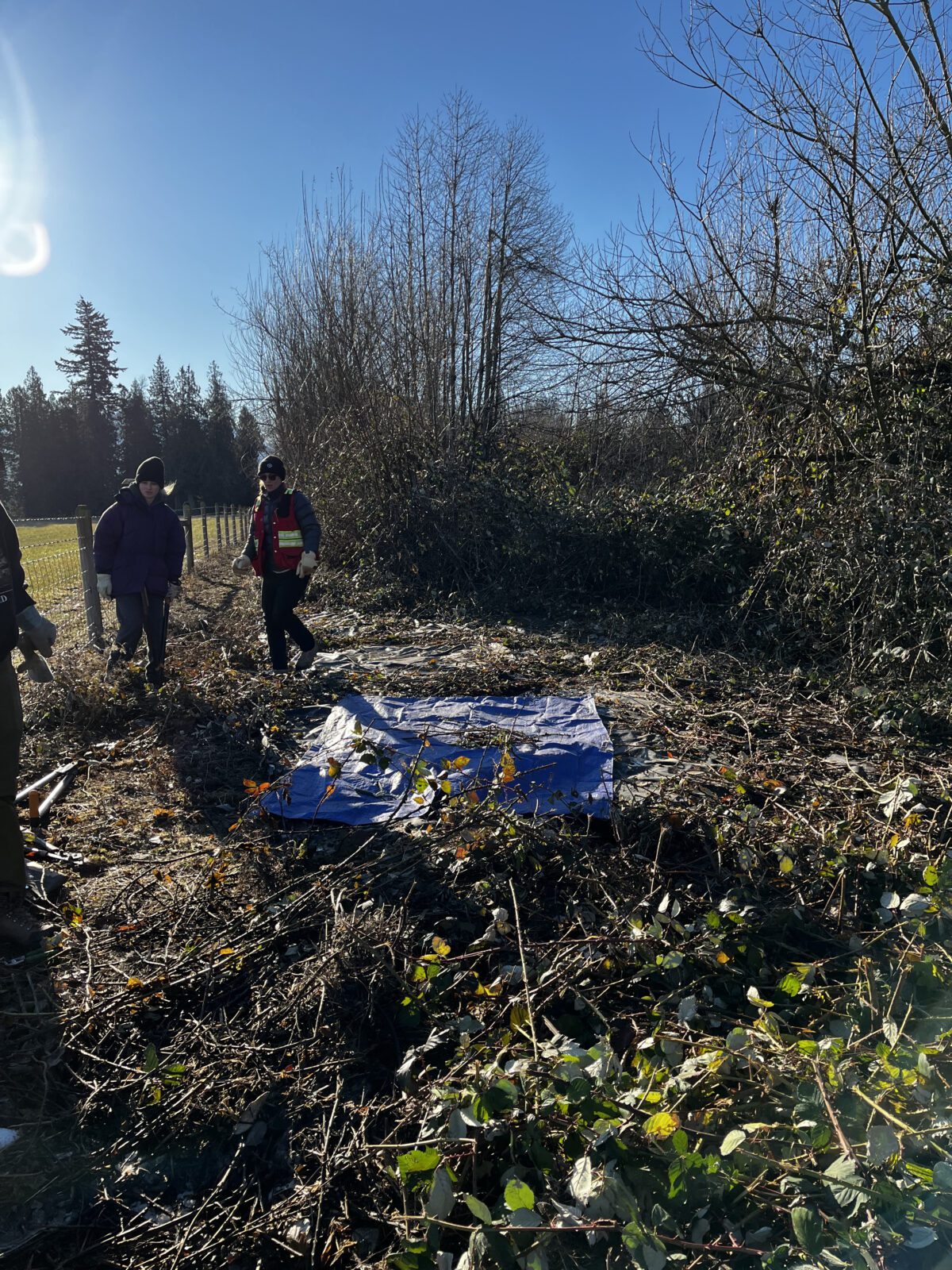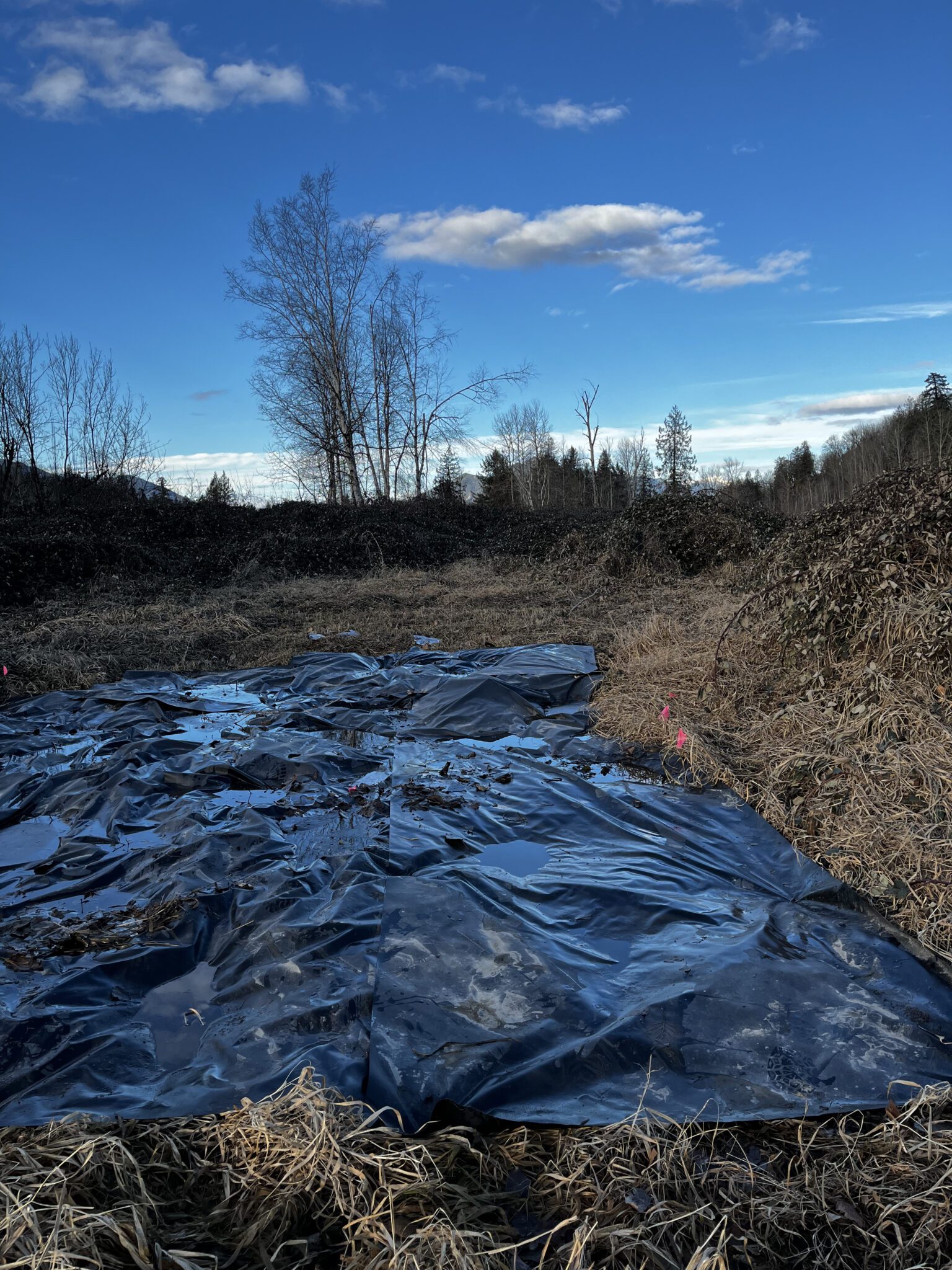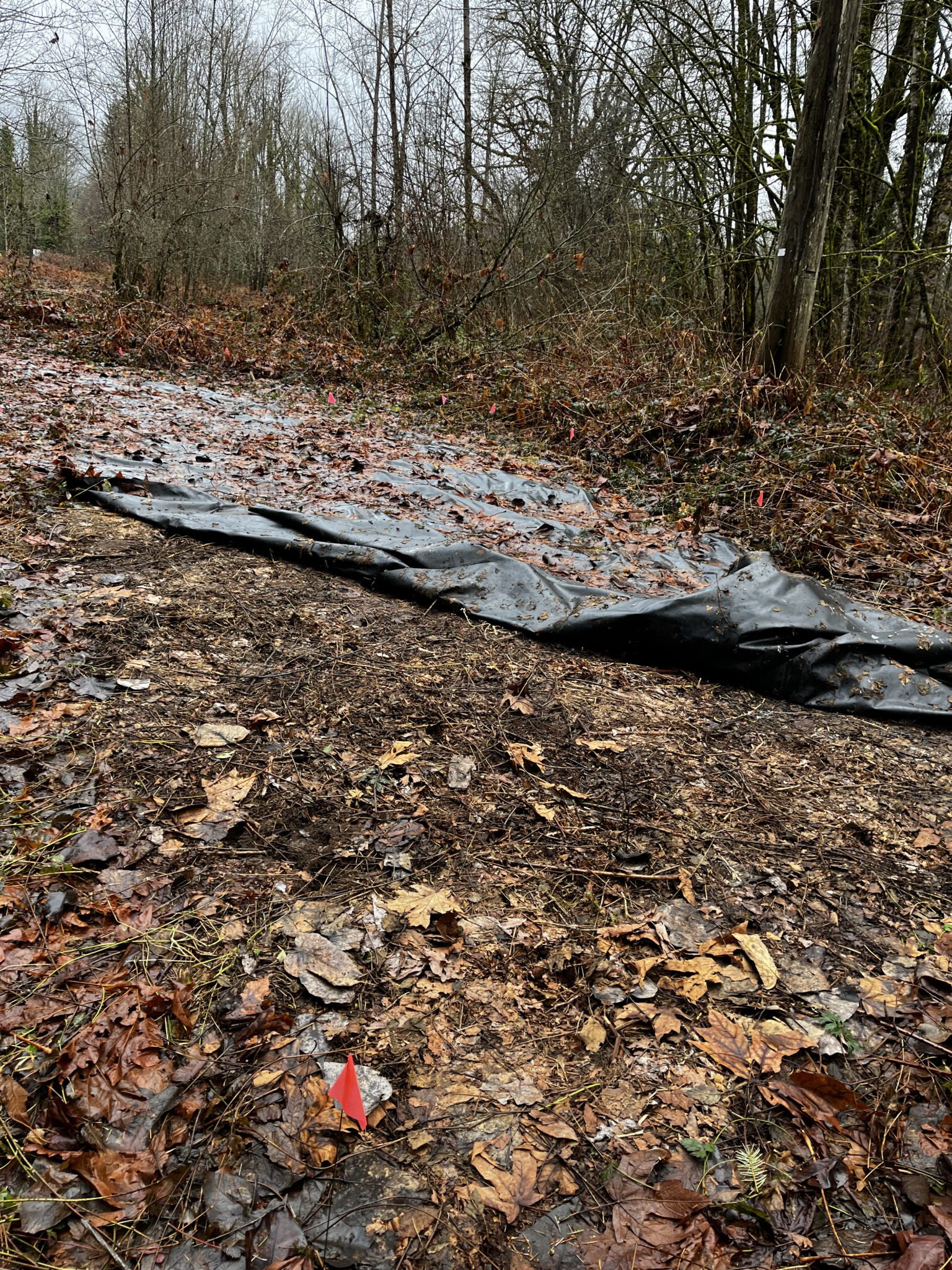
Words by Gray Wardle
If you are anything like the South Coast Crew of the Nature Trust of BC, you struggle with seeing Himalayan Blackberry almost everywhere you go. It is on the side of the road, it invades your garden, it takes over the trees at the high school. It is relentless! It also requires diligent and attentive mechanical removal to combat its continued growth and spread. However, is there an easier control method?
Similarly, riparian habitats all over the South Coast of BC have a very unwanted visitor: Yellow Flag Iris. These invasive water plants can change the functionality of a riparian habitat by reducing stability and suitability for native flora and fauna. Growing from hearty rhizomes (a tuber-like root system), they can easily infest and take over an area, seemingly without weakness. Mechanical removal is effective but labour intensive, and if any fragment of the rhizome remains, they will re-establish and continue to grow. So once again, we have the question of whether there is a better control method?
The South Coast Crew has been experimenting with the effectiveness of both solar tarps and benthic barriers in various conservation areas to combat Himalayan Blackberry, Reed Canary Grass, and Yellow Flag Iris, all highly invasive species with a significant rate of establishment in affected areas.

Our test sites include Camp Slough, Harrison Chehalis, Wells Sanctuary, and Cheam Lake. Solar Tarps are an above-water application of thick dark material, intended to deprive covered plant species of oxygen and light. Ideally, this halts their growth or spread. Benthic Barriers are similar, though they can be applied and secured underwater to prevent the spread of invasive aquatic plants. Over that last year, we saw varied results. Moderately dense Himalayan Blackberry at Camp Slough has been monitored alongside a site that received only mechanical hand treatment. While the blackberry was able to grow laterally at the edges of the solar tarp to seek light, the centre of the tarped area had a higher rate of success. However, in high-density areas, the solar tarp did not halt or eradicate any established plants despite slowing their growth.
The application of solar tarps to the Cheam Lake area was a test in how well Reed Canary Grass (RCG) would respond to being trapped. RCG is an extremely dense invasive that can matte itself and choke off streams or creeks in extreme cases. At Cheam Lake, it has taken over an open area and has been growing uninhibited for quite some time. Solar tarps were applied at the start of the 2022 summer season and progress checked in the fall. The RCG had not died or receded – no progress.
It was Wells Sanctuary where we finally saw some major success. Two areas had benthic barriers applied to combat the Yellow Flag Iris and so far have been effective in killing off the rhizomes present. While Yellow Flag remains present in Luck-a-Kuck Creek, the areas treated with benthic barriers showed a difference in density, growth, and distribution.

Solar tarps and benthic barriers are additional tools that the NTBC uses to combat invasive species in BC. While they may not be the final answer in control methods, they are effective when applied strategically with our collected data in mind. This is how we improve our efforts to restore natural habitats in BC. By continuing to learn and innovate, giving our beautiful province the best chance at maintaining healthy sustainable ecosystems.
